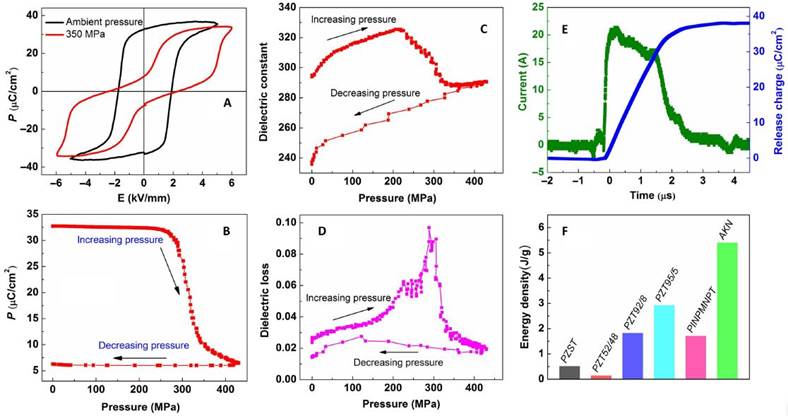Researchers Develop Lead-Free AKN Materials for Explosive Energy Conversion
As a critical technique, the explosive energy conversion has been used for the compact devices with extensive applications in renewable energy, mining, medical industries, etc. Lead based Nb doped Pb(Zr0.95Ti0.05)O3 (PZT 95/5) ferroelectric material has long been recognized as the best material in the past half century.
However, the toxicity of lead and the increasing strict environmental regulation will limit its applications in the long run. Thus there is an urgent need for the discovery of lead-free ferroelectric materials to replace PZT 95/5.
Recently, the research group led by Prof. WANG Genshui and Prof. DONG Xianlin from the Shanghai Institute Ceramics, Chinese Academy of Sciences(SICCAS) has discovered a new, high-performance, lead-free ferroelectric material, (Ag0.935K0.065)NbO3 (AKN) for explosive energy conversion applications. The study was published on Science Advances.
The new AKN material possesses a record-high energy storage density of 5.401 J/g, by comparison with the energy storage density of 2.929 J/g for PZT 95/5. Moreover the AKN exhibits excellent temperature stability up to 150oC, as well as a disruptive ferroelectric to ferroelectric phase transition at a much lower temperature of 41~70oC. The AKN also enables high power, energy conversion within 1.8 microseconds, generating a pulse current of ~ 22 A.
The AKN can be simply synthesized through the traditional solid state reaction method. The high remnant polarization, low permittivity, low volume density, high energy storage density and excellent temperature stability contribute to its superior performance for usage in explosive energy conversion devices.
Meanwhile, the mechanism of the explosive energy conversion behavior was also revealed through the combination of pressure-dependent physical characterization, transmission electron microscopy, in-situ neutron diffraction analysis and theoretical modeling. It can be attributed to a pressure-induced octahedral tilt change from a-a-c+ to AgNbO3-type a-a-c-/a-a-c+, in accordance with an irreversible pressure-driven ferroelectric to antiferrroelectric phase transition. The structural analysis was cooperated with Prof. LIU Yun’s group from Australian National University. The theory part was supported by Prof. CHEN Longqing’s group from Pennsylvania State University of USA.
This work provides an environment-friendly material with better performance than the current commercially-employed lead-containing ferroelectric ceramics for explosive energy conversion. said Prof. WANG genshui, the corresponding author of this paper.

Macroscopic performance of (Ag0.935K0.065)NbO3 ferroelectric ceramics and devices. (A), The pressure dependent ferroelectric properties. (B), The in-situ depolarization curve under increasing hydrostatic pressures. (C) and (D), The hydrostatic pressure dependent dielectric constant and dielectric loss of poled (Ag0.935K0.065)NbO3 ceramics. (E) Practical discharging response of assembled ceramic devices. (F) A comparison of the energy storage densities of the (Ag0.935K0.065)NbO3 ceramics and other ferroelectric materials.
https://advances.sciencemag.org/content/6/21/eaba0367
Contact:
Prof.WANG Genshui
Shanghai Institute of Ceramics
genshuiwang@mail.sic.ac.cn



